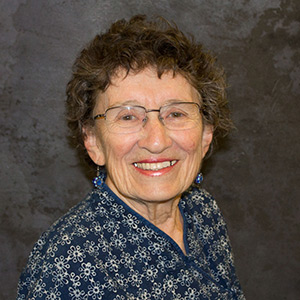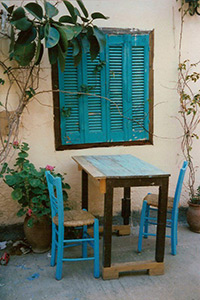 Recently I interviewed Karen Kenyon, an award-winning poet, essayist, and freelance writer who teaches her craft at the Osher Institute at SDSU (for students age 50 and better). One of the questions I asked was ifany of her students had gone on to be published poets or writers.
Recently I interviewed Karen Kenyon, an award-winning poet, essayist, and freelance writer who teaches her craft at the Osher Institute at SDSU (for students age 50 and better). One of the questions I asked was ifany of her students had gone on to be published poets or writers.
“I don’t usually have an ongoing relationship or contact with my students from Osher, so I can’t say. Though it’s possible,” said Kenyon. “One student, Diane Altona, has been in a couple of my poetry classes — and she is an excellent poet, and could be published, I’m sure, if she wanted to be.”
In today’s Google-alert world, I thought Diane Altona would certainly catch wind of this comment. Months later, just to be sure she didn’t miss out on such high praise, I emailed her a link to the interview.
“What a gift you have given me for my upcoming 82nd birthday!” replied Altona. “To know that Karen thinks that highly of my poetry has made my day! I am a great admirer of Karen’s work and thoroughly enjoy her classes. She is a warm and welcoming teacher with a generous heart and an obvious desire to reach out to her students with acceptance and encouragement.”
Wanting to know more about this excellent, soon-to-be-82-year-old poet, I emailed Altona a few questions and was surprised to learn that Kenyon’s class was her first formal attempt at poetry writing. “Although I had tinkered with writing a poem now and then, it was mostly comical, rhyming doggerel to honor friends’ birthdays,” said Altona. “Karen taught us a rich array of poetic styles and how to construct them, and one poem I wrote impressed her enough that she remembered me when I took one of her classes again. She’s like that!
Since taking Kenyon’s poetry writing class in spring 2011, Altona has taken numerous others, and is an enthusiastic fan of the Osher Institute at SDSU.
When and how did you first learn about the Osher Institute?
Once each year I travel to the eastern U.S. to visit my best friend. We’ve been friends since we met in graduate classes at Western Reserve University in Cleveland, Ohio in 1956! She took me as a guest to her Osher classes, first in Atlanta, Ga., and now in Fairfax County, Va., where she has resettled. I envied her, longing for my own such offering of intellectual and social stimulation here in San Diego. Eventually, through a local friend who happened to be giving an Osher lecture at UCSD, I learned to my delight that San Diego County has three Osher locations, SDSU, UCSD and Cal State San Marcos.
Do you have highlights to share from other Osher Institute classes you’ve taken?
My highlights are each and every day there’s an Osher class! My heart beats to the rhythm of a perpetual student.
Specifically, from every class of Peter Bolland’s I have taken, I have come away determined to take another. He is gifted with a rich amalgam of knowledge of the world’s religions and philosophies, a fine-tuned sense of humor, and the skill to both teach and encourage his students to voice their thoughts and opinions. I can say that his classes are all highlights of my Osher sessions.
Art history comes alive in Douglas Barker’s classes, and the traveler in me responds to the “trips” he leads to view world art via excellent slides.
I think of each Osher catalog as a gift package that, when I open it, surprises me with new opportunities for learning adventures and new friends, all at a modest cost.
What keeps you coming back?
The people, Osher students and teachers! I could take the college courses on CDs that I see in catalogs I receive, but for me to sit alone in a room and merely listen turns a rich subject sterile and uninspiring. I look forward to hearing and learning from others. I need the intellectual interaction that Osher classes provide. I read a lot, and books are a refuge and a joy, but Osher’s live interaction with other minds provides another facet to learning — a priceless one.
I ride the trolley by parking in a shopping center at no cost, pay senior fare of $1.25 each way, and the SDSU station is only 2 1/2 blocks from the Osher classrooms.
Have you thought about publishing your poetry?
Frankly, I hadn’t given much thought to publishing my poetry, but I do know that poet friends find it a challenge. The general public seems to prefer prose for their reading pleasure, and a publisher’s “bottom line” is how well a publication will sell. Of course there are more scholarly publications in which the “payment” for publishing is the honor it bestows on the poet! Maybe I’ll give it a whirl.
I have had articles published, mostly genealogical in nature or about animals.
Do you have a favorite style of poetry writing, and could you share one or two of your gems?
In a later class of Karen Kenyon’s — “Writing Haiku in the Japanese Friendship Garden at Balboa Park” — the highlight was a wander through the beautiful upper garden, looking for inspiration for a haiku of our own. Maybe because of haiku’s strict format and the challenge it presented to me, I found I have an affinity for haiku and some of the other forms of Japanese poetry. In the half hour we were given to maybe write one haiku, I wrote seven. The Friendship Garden sponsored a haiku contest, I entered, and I was one of the winners of a year’s membership. The exhibit that inspired my winning entry was that of the delicate Japanese cherry trees.
Blushed invitation
Pink enticement to enter
Bumblebee succumbs.
This is not to say haiku is all I write. “Photo Poems” are a project dear to my heart. My husband and I have traveled to myriad countries of the world and, as an avid photographer, I’ve taken far too many photos, trying to “bring back” all that I saw. I’m working on the challenge of choosing one photo memory from each trip to inspire a poem about it. Maybe it will become a book, and maybe I’ll look for a publisher … or not! Here is one of my favorites, both poem and photo:
MYTHOLOGY
Where are the two old men? I imagine them,
leaning forward, graying dark heads close,
together over thick rich cups of Greek coffee,
deep in their tales of the girls they’ve loved,
battles they fought, money gambled, lost, won,
regaling each other
with their own Greek myths.
When did you begin writing poetry?
I wrote kiddy poetry even back in elementary school. Back then I thought it “should rhyme” à la nursery rhymes. It wasn’t until a high school English class in which we read the classics of poetry that I experienced poems with internal rhymes or that didn’t rhyme at all. That opened the door to my experimentation — and frankly, some pretty poor attempts at serious poems.
What was your career before you retired?
After raising three children (a career in itself, believe me!), I worked nine wonderful years for the San Diego Unified School District headquarters as a curriculum editor. I resigned to pair with my husband in a travel business out of our home, organizing and leading trips all over the world. Those years, from 1986 until 2009, were the richest years of my life.
Do you have a favorite Osher Institute anecdote or small-world moment?
One of the women who used to travel with us showed up in one of my classes, and at the same class, a former coworker of mine at San Diego Unified School District. But one of the best things that has come of the Osher classes is a new friend with whom I share all sorts of commonalities, socializing — and frequent laughter.


